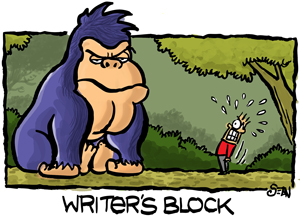I don't know if you've ever tried eating a one-slice sandwich.
Yeah, one slice. Put one slice down. Then pile the slice with chicken, mayonnaise, pickles, tomatoes, lettuce and sauces. Now eat the slice of bread, will ya?
Ummm…I'd rather not, you say
Because even a dumbo knows that a one-slice sandwich is a recipe for disaster. The chicken pieces will drop; mayonnaise will ooze; pickles will pop and your clothes will be a sea of green lettuce.
Come to think of it, there's no such thing as a one-slice sandwich!
There's no such thing as a one slice-article either!
Your first fifty words of your article are the top slice. The last fifty words are your bottom slice.
Ever noticed the difference between slices of bread?
There is no difference. They look the same. They're the same colour, the same tone. In any normal sandwich, two slices of bread are mirror images of each other. And the sandwiching effect is what keeps the stuffing together.
Why on earth would you bother with sandwiching?
In one word: Closure.
Every showbiz person cringes at the curse of a bad ending. They know fully well, that a great presentation would crumble like a week-old cookie, if the ending wasn't dramatic enough.
You don't have, or need, the whiz-bang of show-biz
You don't need the 70 piece orchestra. You can create a great crescendo by simply sandwiching your article.
Tah, dah…Live examples of sandwiching in action
The first example/article below starts with Sarah and her testimonial. It starts with the problem of Sarah not being around to give a live testimonial. The article ends with Sarah and her testimonial.
The second article starts with the Olympics and deadlines. The article ends with Olympics and deadlines. And it gives you the solution, by recommending external deadlines. Read the articles below to see exactly how the opening and closing paragraphs are mirrors of each other.
Example No.1:
Opening paragraphs:
You're at a live speaking event and you sure miss Sarah.
You see at your last event Sarah stood up and told the audience how wonderful you were. She told the audience how reluctant she was before buying your consulting services, and investing in your product. Then Sarah revealed her trump card. As a result of working with you, she now earns over $50,000 more than she did last year. She told the audience how much more confidence she has. How clients are flocking to her like they've never done before. How she took her first vacation in years.
And darn, Sarah's not around at this event. And no one's around to take Sarah's place. Darn, darn, darn.
Closing Paragraphs:
A written testimonial doesn't allow for description of a customer. If you described a customer, you could at best talk about their occupation/post and designation. You could have a photo. Any other description would seem like overkill. In a real life situation, you have no such restrictions. You can paint a powerful picture by simply describing the customer in great detail. And then it will seem like Sarah's around — At every event!
Example No.2:
Opening Paragraph:
Ever seen an Olympics opening ceremony postponed because they needed to push the deadline just a little further? Have you ever seen an Olympics abandoned because some one was ill or feeling lazy? So how come your tiny marketing project runs into so much trouble, time after time? I call it the curse of internal marketing deadlines.
Closing Paragraph:
Get yourself a whole bunch of external deadlines.
Take the client's money in advance. Then see how your you-know-what will be on fire. Your Olympics will loom up and you'll have no choice but to deliver. Internal deadlines are a curse. Go for external deadlines. They give you focus.
The Psychology Behind Sandwiching
The biggest reason your customer started reading the article, is because they snuggled up to your first fifty words. When you use ‘sandwiching' in your copywriting, you close with the same thought that attracted your customer in the first place.
You didn't have to create a whole lot of whiz-bang to end on a crescendo. All you had to do was mirror your ending paragraphs with the opening paragraphs. And yipee-yahooey, you have a powerful closure.
Ahem, remember one more thing
You noticed that the articles started with a problem, and ended with a solution, didn't you? Starting with the problem gets your customer's attention, and closing with the solution, creates a parallel form of closure. In all your copy, look to create drama when opening your copy and create closure when closing your copy.
Don't let the drought in…
The ending of your copy needs closure. Don't leave the door on your article open.
Stop for a second, and look at the copy you're writing today. Do the opening and ending paragraphs nicely hold the contents of your article/copy together? Does your copy have a top and bottom slice?
Or are you still taking a gamble on a one-slice sandwich?
:next_step:


Nice metaphor but.. http://en.wikipedia.org/wiki/Open_sandwich
Ha ha 😉